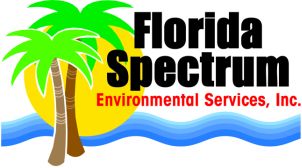| Description |
Enterococci in Water by Membrane Filtration Using Membrane-Enterococcus Indoxyl-β-D-Glucoside Agar (mEI)
|
|---|
| Method |
EPA 1600
|
|---|
| Method Summary |
A sample of water is filtered through a 0.45 μm membrane filter. The membrane is placed on selective medium (mEI), incubated at 41°C, and presumptive enterococci bacterial colonies are enumerated. These presumptive enterococci bacterial colonies are then verified by the presence of a blue halo around the colony and the confirmed count is reported.
|
|---|
Link to the National Library of Medicine's Toxicology
Database for more references
|
| Scope and Application |
Enterococci are commonly found in the feces of humans and other warm-blooded animals. Although some strains are ubiquitous and not related to fecal pollution, the presence of enterococci in water is an indication of fecal pollution and the possible presence of enteric pathogens. As a direct relationship can be constructed between the density of enterococci in water and swimming-associated gastroenteritis, the membrane filtration enterococci test can be used to determine the bacteriological quality of recreational marine and fresh waters.
|
|---|
| Enterococcus Organism |
Enterococci are a subgroup within the fecal streptococcus group. These lactic acid bacteria are gram positive cocci found mostly in the gastro-intestinal tracts of warm-blooded animals. Enterococci are distinguished by their ability to survive in salt water, and in this respect they more closely mimic many pathogens than do the other indicators. Enterococci are typically more human-specific than the larger fecal streptococcus group. EPA recommends enterococci as the best indicator of health risk in salt water used for recreation and as a useful indicator in fresh water as well.
|
|---|
| Result Interpretation |
CFU/100 mL = Colony Forming Units in 100 mL of Sample
|
|---|


